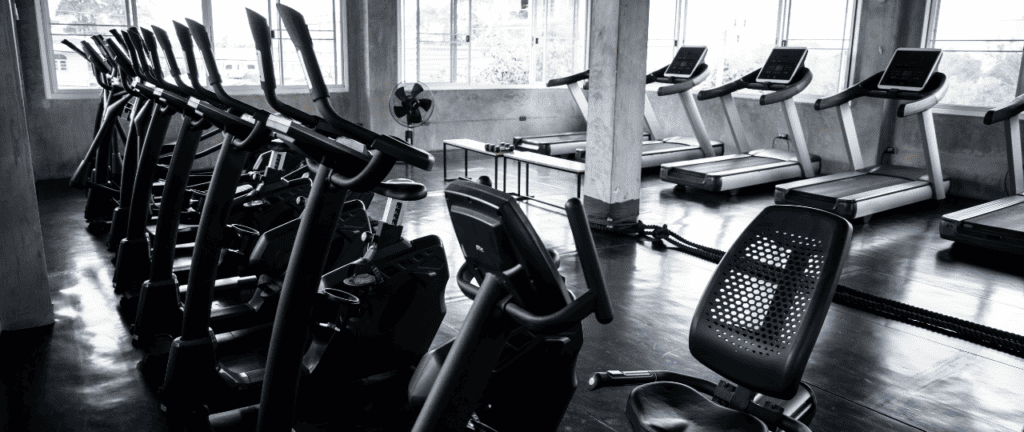
Are you looking to shed those extra pounds and achieve your weight loss goals? Look no further! In this ultimate guide, we unveil the powerful strategy of cardio for weight loss, sharing proven techniques, benefits, and real results. Imagine a fitter, healthier version of yourself, confidently embracing a leaner physique. Cardio is the key that can unlock your weight loss potential and help you transform your body. Let’s dive into the world of cardio, revealing its importance, how it contributes to fat loss, and how you can choose the right cardio workout that suits your needs and preferences. Get ready to embark on a journey toward a healthier, more vibrant you!
What is Cardio?
Cardio refers to exercise that raises your heart rate and breathing rate. It involves rhythmic movements engaging large muscle groups. Examples include walking, running, cycling, swimming, and dancing. Cardio strengthens your heart, improves lung capacity, and promotes weight loss. It’s vital for overall fitness and cardiovascular health.
Importance of Cardio for Weight Loss

Role of Cardio in Achieving Weight Loss Goals:
Cardio plays a crucial role in helping you achieve your weight loss goals. By engaging in cardio exercises, you can burn calories and create a calorie deficit, which is essential for weight loss. Regular cardio workouts increase your heart rate and metabolism, leading to more efficient calorie burning throughout the day.
Is Cardio Necessary for Weight Loss?
Many people wonder if cardio is necessary for weight loss. While it’s possible to lose weight through a combination of diet and strength training alone, cardio can significantly enhance your weight loss efforts. It helps you burn more calories, accelerates fat loss, and promotes overall cardiovascular health.
How Cardio Contributes to Fat Loss:
Cardio exercises specifically target stored body fat for energy. As you engage in cardio workouts, your body utilizes stored fat as a fuel source, leading to a reduction in body fat percentage. Additionally, cardio increases your metabolism, which aids in burning calories even after your workout is complete.
Differentiating Weight Loss and Fat Loss:
It’s essential to differentiate between weight loss and fat loss. Weight loss refers to a decrease in overall body weight, which can include a loss of muscle, water, and fat. On the other hand, fat loss refers specifically to a reduction in body fat percentage while preserving lean muscle mass. Cardio workouts promote fat loss while minimizing muscle loss, helping you achieve a healthier and more toned physique.
Remember, incorporating cardio into your weight loss journey can provide numerous benefits, from burning calories and shedding fat to improving cardiovascular health. It’s an effective tool to help you reach your weight loss goals and maintain a healthy lifestyle.
Choosing the Right Cardio Workout
When it comes to selecting the right cardio workout, it’s important to consider your needs, fitness level, schedule, and personal preferences. By taking these factors into account, you can find a cardio routine that suits you best and maximizes your chances of sticking with it. Here are some tips to help you make the right choice:
Consider Your Needs and Fitness Level
Assess your current fitness level and any specific needs or goals you have. If you’re a beginner or have any health concerns, low-impact exercises like walking or cycling may be a good starting point. If you’re more advanced and seeking a higher intensity, options like running or high-intensity interval training (HIIT) could be suitable.
Be Mindful of Your Schedule and Time Availability
Take into account your schedule and the time you can dedicate to cardio workouts. If you have limited time, high-intensity exercises like HIIT can provide a quick and efficient workout in a shorter duration. If you prefer longer sessions, activities such as cycling or swimming can be great options.
Find Out What Type of Cardio You Enjoy Most
The key to sticking with a cardio routine is finding an activity you genuinely enjoy. Experiment with different types of cardio exercises to discover what brings you the most satisfaction. Whether it’s dancing, hiking, playing a sport, or using cardio machines at the gym, choose an activity that keeps you motivated and excited to work out.
Remember, there is no one-size-fits-all approach to cardio workouts. It’s essential to personalize your routine based on your unique circumstances and preferences. By choosing a cardio workout that aligns with your needs, fitness level, schedule, and enjoyment, you’ll be more likely to maintain consistency and reap the benefits of regular cardiovascular exercise.

Cardio Exercises for Fat Loss
When it comes to burning calories and promoting fat loss, incorporating a variety of cardio exercises into your fitness routine can be highly effective. Here are some top cardio exercises for fat loss along with an estimation of the average calories burned per 30 minutes of activity:

High-Intensity Interval Training (HIIT):
HIIT involves short bursts of intense exercise followed by brief recovery periods. It can be performed with various exercises such as sprinting, jumping jacks, or burpees. In just 30 minutes, HIIT can help you burn approximately 300-450 calories.

Rowing:
Rowing is a full-body workout that engages multiple muscle groups. It offers a low-impact yet highly effective cardio workout. Rowing can help you burn around 210-315 calories in 30 minutes, depending on your intensity.

Elliptical:
The elliptical machine provides a low-impact cardio workout that simulates movements like walking, jogging, or stair climbing. It can help you burn approximately 180-270 calories in 30 minutes.

Weight Training:
While weight training is not a traditional cardio exercise, it can still contribute to fat loss by boosting metabolism and building lean muscle. In 30 minutes of moderate-weight lifting, you can burn approximately 90-135 calories.

Cycling:
Cycling, whether outdoors or using a stationary bike, is a great cardiovascular exercise. It can help you burn around 210-315 calories in 30 minutes, depending on your speed and resistance.

Running:
Running is a high-impact, calorie-burning exercise that engages multiple muscle groups. In just 30 minutes of running, you can burn approximately 240-360 calories, depending on your pace.

Jumping Rope:
Jumping rope is a simple yet highly effective cardio exercise that can be done almost anywhere. It can help you burn around 240-360 calories in 30 minutes, depending on your speed and intensity.

Swimming:
Swimming is a low-impact, full-body workout that provides excellent cardiovascular benefits. In 30 minutes of swimming, you can burn approximately 240-360 calories, depending on the stroke and intensity.

Increasing Daily Step Count:
Walking is a great way to increase your daily step count and incorporate more cardio into your routine. On average, brisk walking can help you burn around 120-180 calories in 30 minutes.
Remember, the number of calories burned may vary based on factors such as individual body composition, intensity, and effort put into the exercise. It’s important to listen to your body, gradually increase intensity, and stay consistent to achieve your fat loss goals.
FAQs about Cardio for Weight Loss

When it comes to cardio and weight loss, many people have questions and concerns. Let’s address some of the most frequently asked questions:
Does cardio burn belly fat?
While it’s not possible to target fat loss in specific areas of the body, cardio exercises can contribute to overall fat loss, including the reduction of belly fat. Regular cardio workouts help create a calorie deficit, which leads to fat burning throughout the body, including the abdominal region.
Is 30 minutes of cardio a day enough?
Thirty minutes of cardio a day can be sufficient for weight loss, especially when combined with a healthy diet. However, the effectiveness of cardio depends on factors such as intensity, frequency, and individual goals. Gradually increasing the duration and intensity of your cardio sessions can yield better results.
Is cardio better in the morning or at night?
The best time for cardio depends on personal preference and schedule. Some people prefer morning workouts as they help kickstart the metabolism and provide an energy boost for the day. Others find evening workouts more suitable for relieving stress and promoting better sleep. Ultimately, consistency is key, regardless of the time you choose.
Should I focus on weights or cardio for weight loss?
Both weight training and cardio have their benefits for weight loss. While cardio helps burn calories and fat, weight training helps build muscle, which can increase metabolism and aid in long-term weight management. Incorporating a combination of both into your routine is often the most effective approach for overall health and weight loss.
How to Get Started
Beginner’s 3x a Week Treadmill Cardio Routine
If you’re new to cardio workouts and looking to get started on a treadmill, this beginner’s routine will help you ease into a regular exercise regimen. Aim to perform this routine three times a week, allowing at least one rest day in between sessions. Remember to warm up before each workout and cool down afterward. Here’s a simple and effective treadmill cardio routine for beginners:
Session 1:
Warm-up: Start with a 5-minute brisk walk at a comfortable pace.
Workout:
Jog: Increase the speed to a gentle jogging pace that challenges you but allows you to maintain proper form. Jog for 1 minute.
Walk: Decrease the speed to a comfortable walking pace to recover. Walk for 2 minutes.
Repeat the jog-walk cycle for a total of 20 minutes.
Cool-down: Finish with a 5-minute slow-paced walk to gradually lower your heart rate.
Session 2:
Warm-up: Begin with a 5-minute brisk walk to prepare your body for the workout.
Workout:
Incline Walk: Set the treadmill to a slight incline (around 3-5%). Walk at a challenging but sustainable pace for 2 minutes.
Flat Walk: Return the treadmill to a flat surface and walk at a comfortable pace to recover for 2 minutes.
Repeat the incline walk and flat walk cycle for a total of 20 minutes.
Cool-down: Conclude with a 5-minute gradual decrease in pace, allowing your heart rate to return to normal.
Session 3:
Warm-up: Start with a 5-minute brisk walk to warm up your muscles and prepare for the workout.
Workout:
Interval Training: Alternate between short bursts of jogging and recovery periods.
Jog: Increase the speed to a moderate jogging pace and jog for 1 minute.
Walk: Decrease the speed to a comfortable walking pace and walk for 1.5 minutes to recover.
Repeat the jog-walk cycle for a total of 15 minutes.
Cool-down: Finish with a 5-minute slow-paced walk, gradually decreasing your speed.
Remember, as a beginner, it’s important to listen to your body and adjust the intensity as needed. If any exercise feels too challenging, slow down or reduce the incline. As your fitness level improves, gradually increase the duration or intensity of your workouts. Stay consistent, stay hydrated, and enjoy the process of improving your cardiovascular health and fitness.
Note: It’s always recommended to consult with a healthcare professional before starting any new exercise program, especially if you have any underlying health conditions.
Cardio Tips

When it comes to cardio workouts and weight loss, here are some additional tips and strategies to maximize your success:
Start Slow and Gradually Increase Intensity: If you’re new to cardio or getting back into it after a break, start with low to moderate-intensity workouts. As your fitness level improves, gradually increase the intensity to challenge your body and continue progressing.
Mix Up Your Cardio Routine: Keep your workouts interesting and prevent plateauing by incorporating a variety of cardio exercises. Try different activities, such as cycling, swimming, dancing, or hiking, to engage different muscle groups and keep your workouts enjoyable.
Incorporate High-Intensity Interval Training (HIIT): HIIT is a time-efficient and effective way to boost calorie burn and fat loss. Integrate intervals of intense exercise with short recovery periods to elevate your heart rate and rev up your metabolism.
Stay Consistent: Consistency is key when it comes to cardio and weight loss. Aim for at least 150 minutes of moderate-intensity cardio or 75 minutes of vigorous-intensity cardio per week, spread out over several days. Stick to a schedule and make cardio a regular part of your routine.
Listen to Your Body: Pay attention to how your body feels during and after cardio workouts. It’s normal to experience some fatigue and muscle soreness, but if you feel excessive pain or discomfort, take a break and consult with a healthcare professional if necessary.
Cardio for Weight Loss Conclusion
Cardio exercises are vital for weight loss. They create a calorie deficit, reduce body fat, strengthen the cardiovascular system, and improve endurance. Incorporating cardio into your routine is crucial for achieving your goals. Find an activity you enjoy, stay consistent, and remember the difference between weight loss and fat loss. Embrace a holistic approach with a balanced diet and strength training. You have the power to transform your body and overall well-being. Let cardio be your companion on this journey to a healthier you. Keep going, and success awaits!

